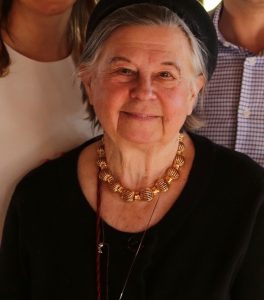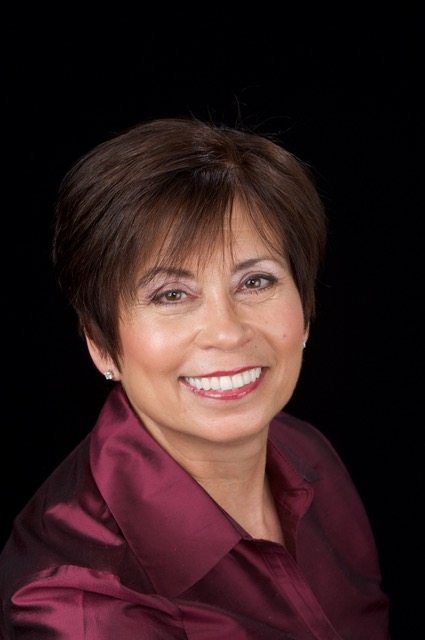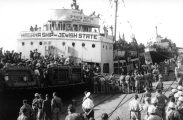- Local Survivor registry
- EDITH ZELIG
- Local Survivor registry
- EDITH ZELIG
Survivor Profile

EDITH
ZELIG
(1931 - PRESENT)
PRE-WAR NAME:
EDITH STEIN
EDITH STEIN
PLACE OF BIRTH:
TIMISOARA, ROMANIA
TIMISOARA, ROMANIA
DATE OF BIRTH:
DECEMBER 9, 1931
DECEMBER 9, 1931
LOCATION(s) BEFORE THE WAR:
TIMISOARA, ROMANIA
TIMISOARA, ROMANIA
LOCATION(s) DURING THE WAR:
TIMISOARA, ROMANIA; ARAD, ROMANIA
TIMISOARA, ROMANIA; ARAD, ROMANIA
STATUS:
SURVIVOR
SURVIVOR
RELATED PERSON(S):
VICTOR ZELIG - Spouse (Deceased),
RUTH ZELIG - Daughter,
LEONARD OPPENHEIMER - Son-in-law,
GIDEON OPPENHEIMER - Grandson,
EMILY OPPENHEIMER - Granddaughter,
LEAH OPPENHEIMER GREAT- - Granddaughter
-
BIOGRAPHY By Ruth Zelig, daughter
My mother, Edith, was born December 9, 1931 in Timisoara (Temesvár), Rumania. She and her sister, Gitta, were raised by a single, divorced, mother in the town of Arad. Magda Schächter, their mother, was born February 6, 1913, and came from a large family, so the girls grew up with a large extended family in nearby towns. They were Hungarian-speaking Jews living in Transylvania (known in Hungarian as Erdély,) and they were bilingual, attending Rumanian schools until the war. Then excluded, they attended ad-hoc, Jewish-run schools. Due to the fact that she lived south of Northern Transylvania (which was awarded to Hungary) after the Rumanian regime of the fascist Antonescu who was deposed by King Michael in 1940, her family was not deported. Rumania then switched alliance to the Allies, however, the Rumanian regime deported able-bodied Jewish men to labor camps.
At the end of the war, the two sisters, aged 15 and 13, joined the Hashomer HaTzayir where they met my father, Victor, aged 17, who came from another Rumanian city. In these Rumanian Jewish youth troops, they were preparing to emigrate to Palestine, in what was called Aliyah Bet. They travelled with other surviving East European youth in an organized effort to the port of Burgas, Bulgaria. They boarded the Haganah ship Medinat HaYehudim. It set sail on September 27, 1947, together with another fully loaded Haganah ship, the Geula. These two ships crossed the Black Sea and passed through the Dardanelles. Aliyah Bet was organized by HaMossad to transport the survivors, the ma’apilim, from Europe to Palestine despite the British blockade. The Medinat HaYehudim was intercepted by a British destroyer at sea outside of Tel Aviv, escorted to Haifa on October 2, but then all on board were interred in the British detention camp on Cyprus. They were released after about 6 months in 1948 and entered Palestine where they were settled into kibbutz Afikim in the southern Kinneret.
Their ship, formerly the USCGC Northland, was scrapped by the US in January 1947, purchased by the HaMossad L’Aliyah Bet and repurposed to transport the ma’apilim. After 1948 it entered service in the Palyam, the precursor of the Israeli Navy, and was eventually scrapped in 1961.
There were dozens of little vessels like theirs, the most famous one being the Haganah flagship Exodus, which preceded my parents’ ship in May, 1947, sailing out of France.
Edith and her sister left their mother and traveled alone to Palestine. Their mother, Magda, joined them a year later. Her ship, too, was intercepted and together with all the other ma’apilim interred in Cyprus, eventually landing in Haifa, and joining her daughters.
Edith married in June of 1949, aged 17, after living in kibbutz Afikim, and then in Kfar Truman (named after President Truman.) They then moved to a famous moshav called Nahalal, where Moshe Dayan was raised. They then settled in Haifa. They left Israel at the end of 1958 and immigrated to Brazil. They lived in São Paulo until 1964 and immigrated to Canada. It was only in 1967 that they finally received papers to enter the United States. As East Europeans (and ostensibly, the State Department targeted Jews in this category) they were denied entry into the US, because of extremely tight quotas. German Jews and French and British Jews had an easier time gaining entry into the US, because they came from “preferred” source countries. This covert anti-Semitism in the State Department dates far back, with the goal of restricting East European Jews. During the period between the Wars, it is well known that entry into the US was severely restricted with challenging vetting.
My mother and her sister separated in 1956 and did not see each other until June 1967. Her sister had married a German Jew in Israel in 1948, and they left Israel in 1956 to move to Germany with the intent of eventually landing in the US. They did so in 1958, because my uncle was of German birth and his brother was living in the US.
Edith has lived in the New York area since 1967. She has lived in five countries and has had to learn five languages. Her native language is Hungarian, and English is her next strongest language. She learned to speak, read and write Hebrew fluently in Israeli Ulpan in 1947-48. She learned Portuguese quickly because it is related to Rumanian, but has since mostly forgotten both. She has been divorced since 1974. She lived in the same building as Magda for several years. She lost her mother in 1995, one month before Rabin’s assassination. In 1956, Edith worked a short while as a housekeeper for Yitzchak and Leah Rabin near Haifa. She had always held them in high regard.
Editor’s Notes:
Refer to Ruth Zelig in Voices of the Descendants
Refer to Historical Notes Below for Cyprus and Palestine
-
SURVIVOR INTERVIEW:
Refer to Biography above by Ruth Zelig, daughter
-
HISTORICAL NOTES:
Cypress and Palestine
In 1945, the British reaffirmed the pre-war policy restricting Jewish immigration to Palestine that had been put in place following the influx of a quarter of a million Jews fleeing the rise of Nazism in the 1930s and had been a major cause of the Arab revolt of 1936–1939. The British then prepared a massive naval and military force to turn back the refugees. Over half of 142 voyages were stopped by British patrols, and most intercepted immigrants were sent to internment camps in Cyprus. About 50,000 people ended up in camps, more than 1,600 drowned at sea, and only a few thousand actually entered Palestine.
-
Sources and Credits:
Biography by Ruth Zelig, daughter; Digital historic and family photographs donated by Ruth Zelig





